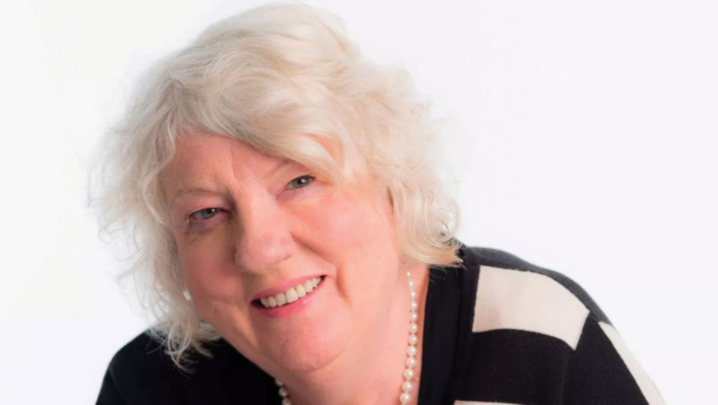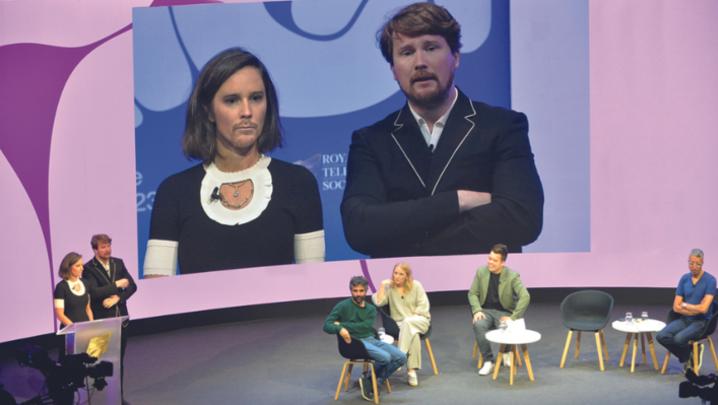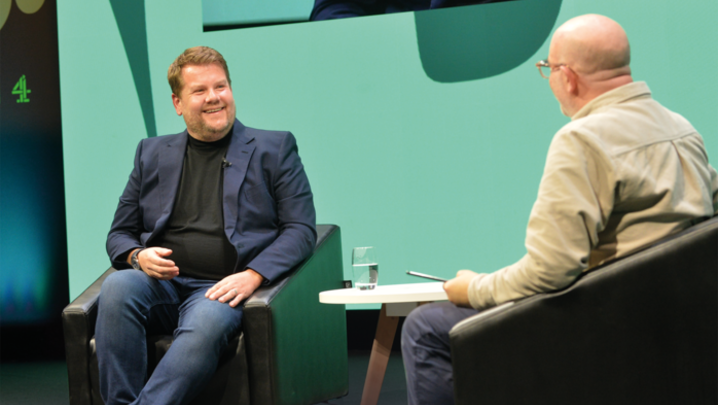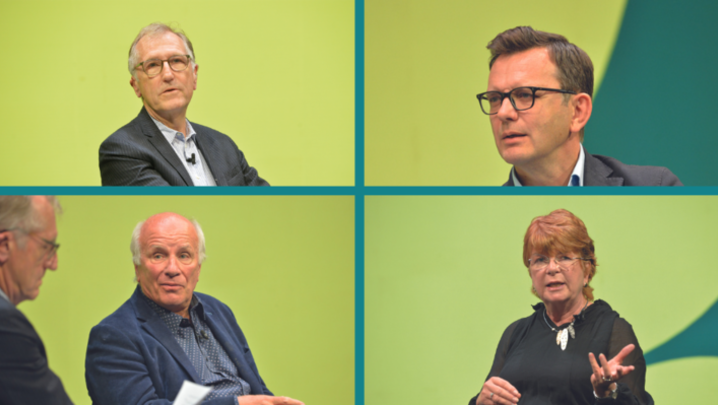A line-up of senior TV industry figures analyses the streamer-led boom for British talent and facilities.
Like football scouts spotting a magical left foot, the deep-pocketed US streaming platforms have made no bones about scooping up the best of British on-screen talent. Charlie Brooker has signed to Netflix, Phoebe Waller-Bridge is in bed with Amazon Prime, and relative latecomer Apple TV+ is able to boast the likes of Ewan McGregor and David Attenborough on its books.
Meanwhile, from Dagenham to Manchester, physical studios are on the rise, with more than 100 sites across the UK in planning and development. It is another manifestation of the burgeoning inward investment on high-end TV production in the UK, which topped £1.6bn in 2019, a figure expected to at least double by 2025.
Meanwhile, spending by public service broadcasters (PSBs) is diminishing, having fallen by nearly 30% over the past 15 years. How will these new dynamics disrupt the UK’s unique production ecology, and how might broadcasters and indies best adapt?
The RTS invited four senior industry figures to explore: the impact of US high-end television investment on the UK production sector; the future shape of our output; the implications for UK indies’ funding models; and the prospects for Britain’s physical studios.
James Bennett, MD of Televisual, moderated the panel comprising Jane Millichip (chief creative officer, Sky Studios), Wayne Garvie (President of international production, Sony Pictures International), Seetha Kumar (CEO, ScreenSkills) and Roger Morris (MD, Elstree Studios).
The UK’s strength in TV came from the fact that it had never really had a film industry, according to Garvie, who added: “We’ve been good at embracing high and low culture.”
He ascribed the UK’s popularity with US investors to four main factors: a very strong history in TV; the English language; creative entrepreneurs used to going out and selling their wares for the past 40 years or longer: and “unbelievable quality in acting talent”. To illustrate his last point, he cited The Crown: “No one can come close.” Garvie then added: “The tax credit has really helped.”
Morris went further: “Tax incentives have kept our industry going. Other countries are catching up. We have to stay on our toes if we wish to continue the business.”
‘It’s about finding the local and making it universal’
Kumar added three more reasons why US companies look to the UK to realise their projects: the studios and their infrastructure; the locations we can offer; and, most precious of all, our workforce. “For decades, the creativity in front and behind the camera is something that has been lauded globally,” she said.
It was not “either PSB or streamer”, it was “as well as”, argued Millichip, adding that, over the past year, Sky Studios had worked on 29 projects for US buyers with either co-production or pre-sales deals, for 15 different networks and platforms. “The US sees the UK as an exciting market but, equally, we still need the US for a lot of our funding. So we have an increasingly complex and nuanced world. It’s not binary.”
Garvie pointed out that Netflix’s second-biggest market was Brazil, emphasising the model of spending less, while getting more. “It’s about finding the local and making it universal,” he reflected.
Millichip agreed, and namechecked Sky Italia’s Gomorrah – “Italian mafia, very rooted in its world, but with a huge global audience. Audiences are becoming more sophisticated”.
What steps did the industry need to take to remain competitive and attractive to inward investors? The panel agreed that building on the UK’s reputation for creativity was key. “Do we have the writing schemes, the production schemes, and are we able to fund them?” asked Millichip.
She also credited British soaps for creating organic but excellent training grounds. “You see superb writers coming out of those factories. They are great for our skills base.”
Morris, whose Elstree Studios is connected to a training college, stressed the ongoing need for technical know-how, including the growing visual effects business. “We have to make sure our workforce remains skilled, and trained, and that we’re bringing young people into the industry,” he said.
Were the deals being offered by streamers to indies good or bad? Again, said Millichip, it was not binary. At one end, indies had long retained control of their rights and distributed them internationally; at the opposite end, streamers offered all-rights deals up to 130% of the budget. She described a “sweet spot in the middle”: working with streamers to secure margin upfront – helpful for working capital – while retaining rights when working with linear platforms in the conventional way, and hopefully seeing an upside.
Garvie described how securing an upfront premium might be most beneficial for a small indie. He predicted that, in the increasingly crowded market, it would be the medium-sized production companies that might lose out.
For any producer hoping to break into the market, Millichip urged them to take advantage of the myriad of different deals offered by Sky and others: “Owning your own company isn’t the only way. Quite a lot of producers are terrible at running businesses, but brilliant at making shows. Getting an in-house deal that allows third-party shows could liberate you to spend all your day developing and writing.”
Where does PSB sit in all of this? Millichip credited the PSB tradition for nurturing the best talent, creating a healthy marketplace and influencing others to offer value, diversity and inclusion. “Those decades of PSB have suffused our cultural sector,” she said.
PSBs continued to serve as a middle ground for the workforce between training and working on high-end productions. Morris also noted the importance of PSBs in providing opportunities for young people, such as writers on radio. “What we try to do is be ahead of the game, which changes rapidly, by trying to encompass the workforce of young people and learn from their ideas. They’ll colour what the industry looks like in 10 years’ time.”
So were studios more than just a real-estate investment? Sound stages were now popping up in response to a famine-hit period during which the value of their land had made redevelopment of lots such as Teddington attractive. The challenge would be to make these big new investments pay, said Morris. “The studio business isn’t one that makes a fortune.”
As well as coping with political pressure to push production to the regions, Morris stressed the need for joined-up thinking by the DCMS and everyone else involved, to answer the needs of clients, and for training to keep the workforce fresh and diverse.
Building on the training college at Elstree, with its curriculum for 14- to 19-year-olds, Morris wanted to transfer that model to other areas of the UK and to develop more training alliances with the BBC and other studios and bodies. “We will talk and work together to find solutions for the skills shortage we anticipate. Together, we can create a workforce appropriate for this century.”
“Our currency is experience,” agreed Kumar. “If we look at our role in storytelling, that involves a range of skills. Perhaps we should look ahead, ask what we want to do and work backwards from that to identify the skills we need.”
Finally, each of the panellists was asked for one piece of advice. “For indies, don’t think binary in terms of rights or your relationships. Understand your customer and who they’re trying to attract. Work with the broadest spectrum of writing talent, think nations and regions, think forwards,” said Millichip.
“Think global by being local. It doesn’t matter who you are, you can construct a story that will be watched around the world. This is a unique moment in communications history, and that’s the goal to win. Win by understanding your environment,” suggested Garvie. “Embrace creativity, embrace technology, understand business,” said Kumar.
“We all have to talk together, move together, provide for each other and also have to try to understand what each other needs,” concluded Morris.
Report by Caroline Frost. ‘The streamers and the UK production ecology’ was an RTS event held on 31 March. The producers were Heather Jones and James Bennett.






